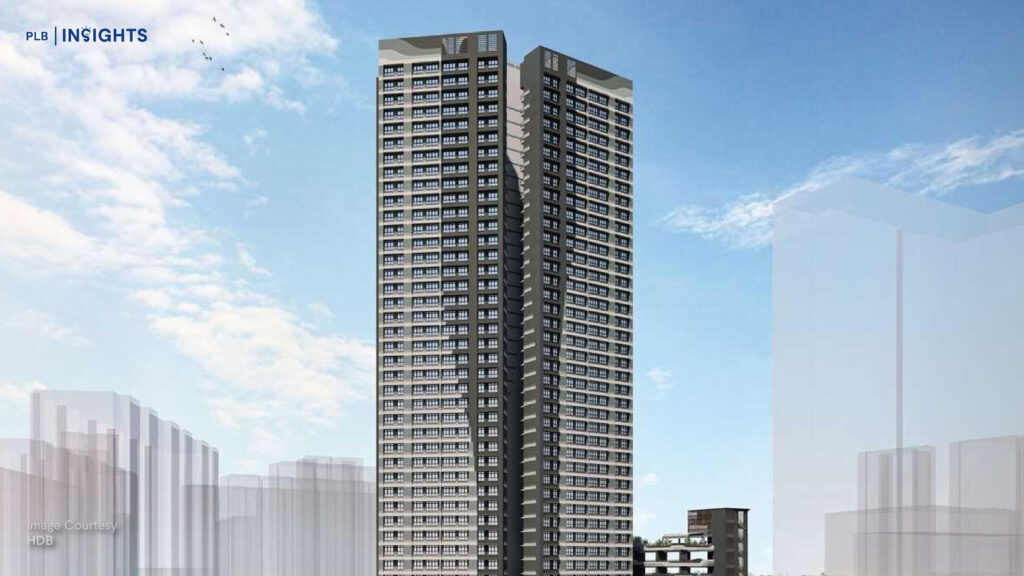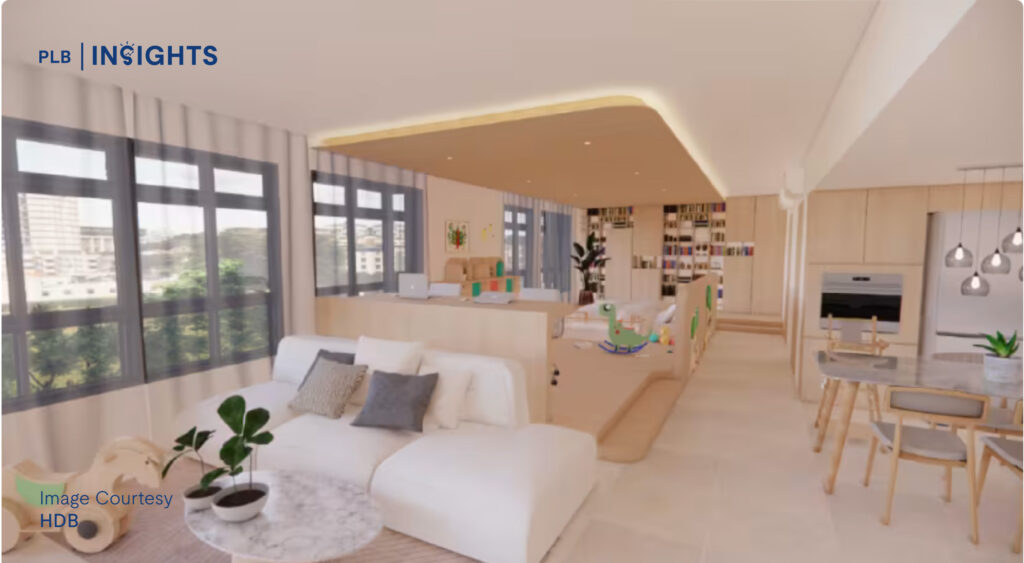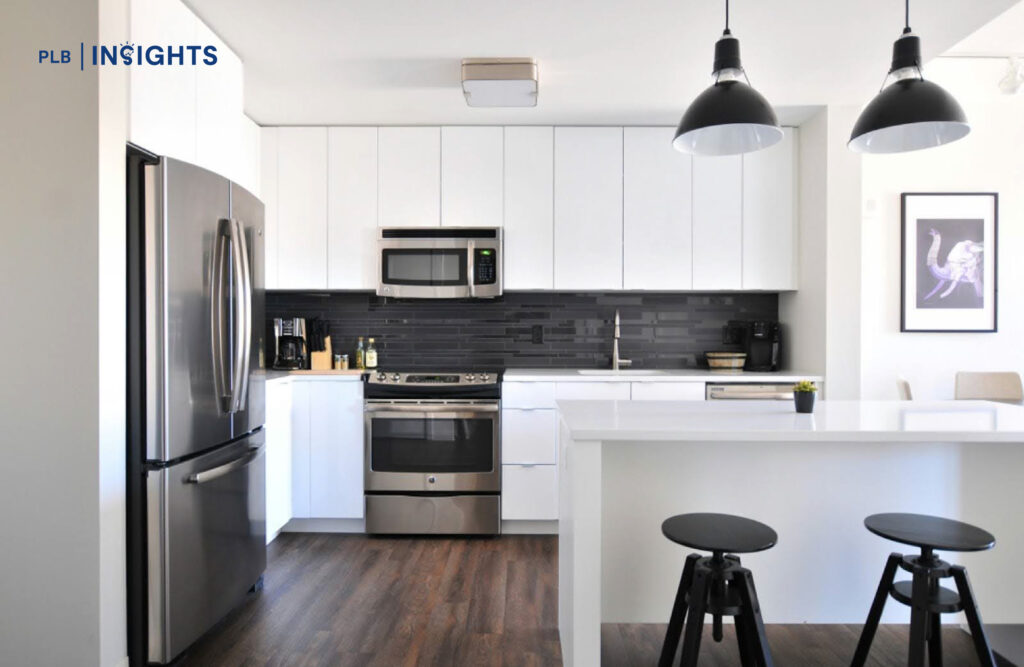
In October 2024, Singapore’s Housing Development Board (HDB) will introduce a groundbreaking initiative: the pilot launch of White Flats, a new concept for Build-To-Order (BTO) housing in the Crawford Heights project at Kallang/Whampoa. This innovative approach to public housing is poised to reshape the landscape of homeownership in Singapore, but it raises several questions about its potential success in the market and its appeal to prospective homeowners.
White Flats promise a departure from traditional HDB designs by offering beamless structures that allow homeowners unprecedented flexibility in customising their living spaces. This “blank canvas” approach enables residents to tailor their homes to their specific needs and preferences, making it an attractive option for those seeking individuality in their living environments.
However, the introduction of such customisable spaces also sparks a debate about the implications for future resale value. While young couples may appreciate the opportunity to create a personalised home, there is concern that unique and unconventional layouts could deter future buyers. Dissenting opinions highlight the risk that the resale market might be negatively impacted by designs that cater to individual tastes rather than a more universally appealing aesthetic.
As we explore the potential of White Flats in this article, we will examine the factors that may influence their appeal to younger Singaporeans, the prospects for their resale value in five years, and what this could mean for the future of public housing in Singapore. Join us as we navigate the complexities of this new housing concept and its potential impact on the Singaporean real estate landscape.
Are White Flats actually more viable with the PLH Model?

In our previous article, we explored the advantages and challenges of White Flats, Singapore’s innovative new housing concept. We discussed the various steps involved in transforming a White Flat into a personalised dream home. However, it’s important to consider the implications for future buyers who may enter the resale market after the initial owners have completed their renovations.
With renovation costs having surged sharply since the pandemic—and expected to continue on an upward trajectory—turning a White Flat into a dream home is becoming a significant financial undertaking. Prospective homeowners need to be mindful that those who purchase these flats in the resale market will likely face similar renovation expenses, creating a potentially daunting financial barrier.
Moreover, buyers of White Flats looking to cash out after the five-year Minimum Occupancy Period (MOP) might gravitate toward more conventional designs that offer cost-saving advantages. Unlike traditional BTO flats, which come with predefined layouts and walls, White Flats could be perceived as less appealing due to the additional financial burden associated with their renovation. This raises questions about the long-term viability and attractiveness of the White Flat model compared to existing BTO options.
Interestingly, the White Flat concept may serve as a subtle mechanism to encourage homeowners to remain in their properties longer, rather than flipping them for profit. If resale transactions for HDB flats slow down, it could inadvertently lead to a slower rise in property prices, presenting a “soft” approach to price control that policymakers would have considered.
Given the elevated start-up costs associated with customising a White Flat, many homeowners might find themselves reluctant to sell immediately after the MOP. Instead, they may choose to stay longer to maximise the value of their renovations. This scenario aligns with the objectives of the Prime Location Housing (PLH) model, which we’ve discussed in previous articles.
Both the PLH model and the White Flat concept encourage a longer-term commitment to homeownership rather than short-term profit-seeking behaviours. The PLH model enforces this through an extended MOP in prime locations, while the White Flat concept does so by leveraging the higher costs of renovation and customisation. Together, these approaches could significantly influence how young Singaporeans envision their property journeys.
As discussions around “forever homes” resurface in light of these substantial investments, it becomes crucial to evaluate how these evolving housing policies will shape the future of homeownership in Singapore.
Understanding Taste and Matching: The Art of Designing White Flats

Even though White Flats are designed to encourage homeowners to remain in their properties for longer periods, it is important to recognise that life circumstances often change. Homeowners may eventually feel the need to sell their BTO flats to upgrade to a new property that better aligns with their evolving lifestyle and future needs. In this context, the design choices made in a White Flat take on significant importance, as they can have a lasting impact on both personal satisfaction and future resale value.
Designing a White Flat offers a unique opportunity for homeowners to express their individual tastes and preferences. Unlike traditional BTO flats, which come with predefined layouts and limited customisability, White Flats allow residents to create spaces that genuinely reflect their personality and lifestyle. However, this freedom can also lead to challenges. The choices made in designing these spaces can either enhance or hinder the property’s marketability down the line.
For example, a couple may choose to embrace the Japandi design style, which blends Japanese minimalism with Scandinavian functionality. This aesthetic is currently trendy, celebrated for its clean lines, neutral palettes, and emphasis on natural materials. While it may resonate deeply with the current homeowners, future buyers might not share the same appreciation for this style. Homeowners who invest heavily in a specific trend run the risk of alienating potential buyers who may prefer more traditional or eclectic designs.
To navigate this challenge, homeowners should consider “future-proofing” their design decisions. This means making choices that are adaptable and flexible, allowing the space to evolve with changing needs. For instance, rather than committing to a permanent open-concept layout that may not suit future family dynamics, homeowners might invest in modular furniture or movable partitions that can be rearranged as their lifestyle changes.

Additionally, homeowners should think about functionality as much as aesthetics. While a striking design may be visually appealing, practical considerations such as storage space, natural lighting, and room functionality should also be at the forefront of their design choices. By creating spaces that are both beautiful and functional, homeowners can enhance their day-to-day living experience while also making the property more attractive to potential buyers later on.
Good design often transcends personal aesthetic preferences. Universal design principles—such as balance, harmony, and proportion—can create spaces that appeal to a wider audience. While personal style is undoubtedly important, relying solely on subjective tastes can be limiting. For instance, a homeowner may love bold, vibrant colours or avant-garde furnishings, but these choices might not resonate with the broader market when it comes time to sell.
Universality in design often hinges on creating spaces that feel inviting and functional to anyone, regardless of their personal style. Neutral colour palettes, versatile furnishings, and well-considered layouts can help establish a sense of calm and order that appeals to a diverse range of potential buyers. By focusing on these elements, homeowners can create an environment that is both personally satisfying and market-friendly.
The challenge lies in striking a balance between personal aesthetic and universal appeal. Homeowners should consider integrating personalised touches—such as art, textiles, or decorative accents—while maintaining a more neutral base that can be appreciated by others. This approach allows for self-expression without overshadowing the intrinsic value of the property.
For example, while the Japandi style may currently be in vogue, a homeowner could select a neutral backdrop that incorporates elements of this aesthetic while leaving room for future buyers to envision their own style in the space. By anchoring the design in universally appealing choices and layering personal touches, homeowners can cultivate an environment that feels both unique and accessible.
Finally, while financial considerations and market trends are essential, it’s crucial not to overlook the emotional aspect of designing a home. A White Flat should be a space where homeowners can create memories and feel a sense of belonging. Engaging in thoughtful design that reflects personal values and experiences can foster a deep emotional connection to the home. This connection may ultimately play a role in the homeowner’s decision-making process regarding resale.
While White Flats encourage longer-term residency, they also present unique challenges and opportunities for homeowners. By carefully considering design choices that balance personal taste with market appeal and functionality, homeowners can create a space that not only serves their current needs but also positions them well for the future. Ultimately, understanding how to navigate this intricate balance will play a critical role in the overall satisfaction and potential resale value of their White Flats.
How will White Flats compete in the Resale Market 5 years from now?
As the pilot launch of White Flats approaches, many are curious about their potential performance in Singapore’s resale market five years after their introduction. The unique design and customisable features of White Flats present both opportunities and challenges that will significantly influence their appeal and marketability in the future.
To gauge how White Flats will compete in the resale market, it’s essential to consider the broader dynamics of Singapore’s real estate landscape. The property market is influenced by various factors, including economic conditions, demographic shifts, and changes in consumer preferences. As we look ahead to the next five years, these factors will play a crucial role in shaping the demand for White Flats.
Economic conditions, such as interest rates and overall economic stability, will directly impact buyers’ purchasing power and willingness to invest in properties. If the economy remains robust, we might see an influx of young families and professionals looking for their first homes, potentially increasing demand for flexible living spaces like White Flats. However, if economic conditions take a downturn, buyers may become more conservative, prioritising traditional layouts with established resale values over customisable options.
One of the main selling points of White Flats is their potential for customisation. Homeowners can create spaces that reflect their individual tastes, making these flats highly appealing to certain segments of the market. However, this customisation could also present challenges when it comes to resale. The very features that attract the initial buyer might not appeal to future buyers, who may have different tastes or needs.
For instance, a White Flat designed with an open layout and avant-garde design elements may be a dream for some, but could deter prospective buyers who prefer more conventional living spaces. This potential mismatch raises questions about how well these properties will retain their value and attract interest in the resale market. Homeowners will need to consider striking a balance between personal expression and universal appeal in their design choices to mitigate risks when it comes time to sell.
Understanding the target demographic for White Flats is key to predicting their resale performance. These flats are likely to attract younger Singaporeans, including first-time buyers and young families seeking flexibility and the chance to personalise their living spaces. However, as these demographics evolve, so too will their preferences and needs.
In five years, the needs of first-time buyers might shift due to various factors, including changes in family structure, work-from-home trends, and lifestyle preferences. If White Flats can adapt to meet these changing needs, they may have a better chance of maintaining their appeal. For example, integrating smart home technologies or energy-efficient features could enhance their attractiveness to environmentally conscious buyers.
Another significant factor in how White Flats will compete in the resale market is how they compare to other BTO options. Traditional BTO flats come with established layouts and designs that have proven resale value. If these flats maintain their popularity and resale prices, White Flats will need to demonstrate unique advantages to attract buyers. This might involve highlighting features like lower renovation costs in the long run or the ability to create a bespoke living environment.
Moreover, as market trends evolve, it will be essential for White Flats to stay relevant. This could involve embracing current design trends, such as biophilic design or multi-functional spaces, to resonate with future buyers. The ability to adapt to these trends will be critical in ensuring that White Flats remain competitive in the resale market.
Final Thoughts
Ultimately, the long-term value of White Flats will depend on the emotional and practical experiences they offer to homeowners. If these properties succeed in fostering a sense of belonging and community, they may retain value despite individual design choices. A well-designed White Flat that resonates emotionally with its residents may attract future buyers willing to overlook specific quirks in favour of a home that feels inviting and livable.
In conclusion, the competitive landscape for White Flats in the resale market five years from now will depend on various interrelated factors, including economic conditions, customisation choices, target demographics, market comparisons, and the overall emotional resonance of the spaces created. By understanding and adapting to these dynamics, White Flats have the potential to carve out a niche in the competitive Singaporean real estate market, offering unique living solutions that appeal to both current and future homeowners.
Looking for your forever home? If you need guidance navigating the ever-evolving real estate market, do reach out to us here and our experienced consultants will be ready to assist you. See you in the next one!







